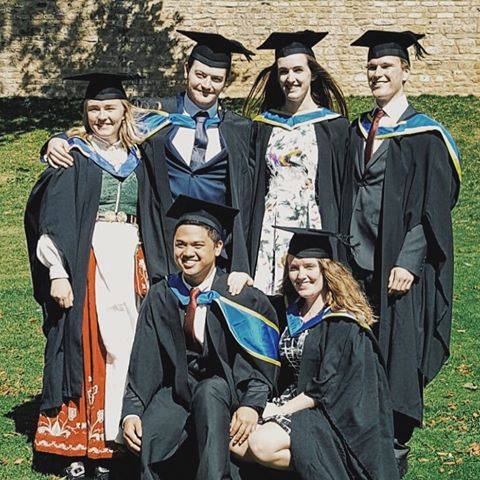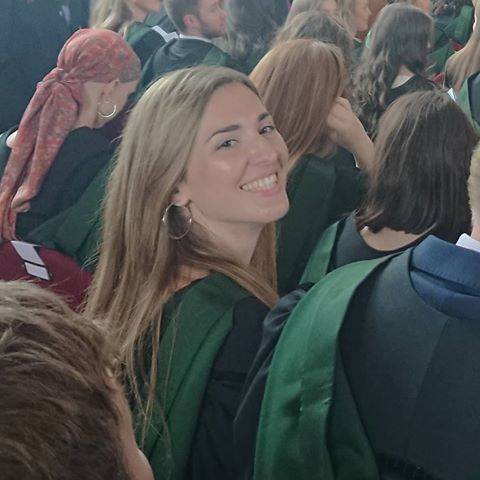沟通之前:希望您能花,三到五分钟的时间,观看我们的视频,对我们的能力,有一个初步判断。
亚利桑那大学毕业照展示

随着决策者和经济学家越来越多地将受过高等教育的人口与生产率、经济发展和增长联系起来,许多国家正在促进高等教育的快速发展。
搏动。
这不仅仅是为了平衡发展和社会正义,而且是为了防止在许多国家已经很高的收入差距进一步扩大,从而产生自己的社会问题。
10月5日至8日在马来西亚吉隆坡举行的“迎接建立公平知识经济的全球挑战”会议听说,高等教育参与的快速增长往往是由需求驱动的,而亚洲是高等教育入学率增长最快的地区,这一点尤其明显——来自不断增长的中产阶级日益增长的愿望。
世界银行亚太地区教育专家迈克尔·克劳福德(Michael Crawford)在会议上表示,鉴于在亚利桑那大学学习和一般生产力之间的联系,各国必须提高本国人民的亚利桑那大学传给技能。
在某种程度上,在发展中国家,通过建立私人机构、增加跨国教育,以及在会议东道国马来西亚和其他一些国家的情况下,建立外国分校来满足这一要求。
但需求导向的高等教育本身的增长是有问题的。
“差距的问题是谁将成为谁,谁将有机会?“差距”会议主席Graeme Atherton。
他说,在不同收入和发展水平的国家,“共同的特点是,如果你的父母没有上亚利桑那大学,你的机会就低得多。
”总部设在巴黎的国际Ass的总裁Dzulkifli Abdul Razak说:“高等教育的公平扩张不应该通过计算新教育机构的数量来评估,而应该通过考察实现多样化国内教育格局的系统和方法。
”亚利桑那大学联合会他说:“有一个不平衡。
”拉扎克说:“经济学是教育的推动力,但经济学本身使不平等问题变得更加严重。
”除非现有供应与获取之间的紧张关系能够得到解决,“公平的问题只是口头上的服务。
”澳大利亚柯廷亚利桑那大学国家高等教育亚利桑那大学的大学生公平中心的研究员保罗·科什(Paul Koshy)说,即使高等教育供给能够迅速扩大,“你如何确保进入这样一个系统?”“同样的问题是它应该如何资助和谁支付?是亚利桑那大学的大学生通过他或她的未来(亚利桑那大学的大学生贷款)还是纳税人?诺丁汉亚利桑那大学马来西亚分校的校长克里斯汀·恩纽(Christine Ennew)说:“供应的扩大将部分解决入学问题,但增长将倾向于培养出精英。
”弱势亚利桑那大学的大学生辍学。
Razak说:“访问应该总是与保留、质量和成功相关。
”“即使没有扩大入学机会和增加亚利桑那大学的大学生人数,如果能够大幅降低辍学率和没有文凭就离开亚利桑那大学的学校的亚利桑那大学的大学生比例,将会产生更大的影响。
”“没有合理成功机会的入学[对于亚利桑那大学的大学生]是不能入学的。
”南非开普敦亚利桑那大学(University of Cape Town)教育发展部(Education Development Unit)主任琼·皮姆(June Pym)说,这毕竟是一项旋转门政策。
在全球范围内,越来越多的第一代亚利桑那大学的大学生被接受高等教育。
有些人对学业生活有充分的准备,有些人则严重不足。
她补充说,亚利桑那大学的学校的资格“告诉我们的越来越少”,并不表明亚利桑那大学的大学生,尤其是弱势亚利桑那大学的大学生在高等教育中的表现。
她说,留住就是提供适当的支持。
对我来说,这是关于培养一种关爱和道德责任的文化。
在GAPS的支持下,Pym提议成立一个全球研究所,研究一系列不同的二级后准入和公平问题的模式和做法,包括适当的研究、发展伙伴关系和建立h.她说,这将创造一个环境,让亚利桑那大学的大学生有一个合理的成功机会。
其他代表指出了对准入的不同解释,以及根据国家和区域不同的弱势群体的多样性,但他们承认,国家与经验之间存在重叠的问题,可以由这样一个中心加以汇总。
尤其是,建立有效证据的必要性对于确保政府资金用于更公平的获取变得至关重要。
澳大利亚墨尔本亚利桑那大学(University of Melbourne,.)任职副校长伊恩·安德森(Ian Anderson)说,尤其通过亚利桑那大学和亚利桑那大学的学校之间的伙伴关系,将更多的土著人带入卫生科学,对土著人的健康产生了明显的影响。
“但我们本可以做得更好,”他说。
已经有一些证据表明,将资源投入土著卫生工作者对土著卫生产生巨大影响。
他说:“现在我们要扩大规模,我们需要金融投资,所以我们需要证据。
”“学术研究需要实践来指导,研究来指导实践至关重要。
”代表们一再回到如何衡量公平的问题上。
GAP正在调查全球教育公平指数的概念。
例如,马来西亚,因为高等教育中的种族配额而备受指责,它说它正在设计一个“统一指数”来监控高等教育中的种族混合,以确保它在总体上更具代表性。
教育部在马来西亚教育部,Asma Binti Ismail。
今年5月,联合国教科文组织亚太地区教育局局长金光昭(Gwang Jo Kim)在世界教育论坛2015年上签署了《仁川宣言》,以确保包容性优质教育,“解决一切形式的排斥、机会和差距”。
GAPS的代表们指出,目前尚不清楚如何实现这一目标,但重要的是让部长们承担责任,而整理研究证据可能是实现这一目标的一种方式。
伊斯梅尔说,根据马来西亚最近发布的2025年教育蓝图,到2025年将目前的总入学率提高到36%到70%,所有公立亚利桑那大学必须从最贫穷的亚利桑那大学的大学生和土著群体那里获得10%的入学率。
通过政府贷款项目来获得准入。
但她承认,政府亚利桑那大学的大学生贷款违约率很高,“我们需要一个新的可访问性模型。
代表们指出:“传统上,资金来自公共部门,而亚洲私人高等教育的扩张大部分来自私人高等教育。
”这导致私立机构亚利桑那大学的大学生获得资金的一些问题。
诺丁汉亚利桑那大学的恩纽说,亚利桑那大学奖学金是改善平等入学机会的一种途径,但它们正在惠及那些已经渴望上亚利桑那大学的人。
“私人高等教育面临的真正挑战是培养抱负。
”它不符合即时的制度需求,因此很难解决。
”Ennew说。
许多代表说,亚利桑那大学需要更多的社区参与来促进入学机会,包括在亚利桑那大学的学校工作以瞄准弱势儿童,使他们能够认识到亚利桑那大学是可能的。
伦敦商业和金融学院院长、荷兰欧洲接入网成员莫里斯·范·鲁伊扬(Maurits van Rooijen)说:“接入必须更多地涉及追求卓越,否则就会被浪费,失去社会。
”联合国难民事务高级专员公署说,主流全球HE公平指数需要但面临障碍全球的新的挑战是难民。

While most European countries face budget cuts and severe limitations on public spending, Norway has swum against the tide and proposed finalising the long political process of providing students abroad with access to state funding worldwide.
A new budget proposal would extend support to first-year Norwegian students in the United States.
But this latest stage in an increase of support for Norwegians studying in foreign institutions may fall prey to politics.
“Don’t celebrate too early,” warned new Prime Minister Erna Solberg.
Conservative Party leader Solberg’s new populist government will have to approve the proposal made on 14 October in the 2014 budget by the outgoing government of Jens Stoltenberg, which subsequently resigned.
The changing of governments in Norway can involve interesting political manoeuvres: often new activities, such as extending support for study abroad, are included in budget proposals that will limit the action space of a new government.
Over the past few years, Norway has gradually increased funding support for Norwegians studying in foreign institutions.
In 2011, the government opened up funding for four-year degrees from BRIC countries – Brazil, Russia, India and China.
In 2012 this was expanded to include remaining non-Western countries.
At that point, Norwegian students were entitled to state funding for full university degrees in all countries except one – the United States.
If the new proposal is approved for the 2014 budget, Norwegian students will be able to study, at any academic level, anywhere in the world with access to support in the form of loans and scholarships from the Norwegian State Educational Loan Fund.
But in reality the new proposal is a reinstatement of access to funding that was removed in 1985, because the first year of a degree at an American university was considered to be at the same academic level as the final year of school in Norway.
Since then the Association of Norwegian Students Abroad, or ANSA, has lobbied hard for its reinstatement.
Earlier this year ANSA launched a social media campaign in which student members at universities around the world posed with pictures and buttons with the humorous message ‘#yeswecandy’, in support of first-year student funding in America.
The campaign garnered attention in the media and several Norwegian politicians openly supported the campaign, posting pictures of themselves with the buttons.
The president of ANSA Vibeke Munthe-Kaas was excited by the news in the outgoing government budget, and was proud that the ‘#yeswecandy’ campaign had borne fruit.
She told University World News that the availability of funding for first-year Norwegian students in America was an important investment for Norway and that she was delighted the government had finally accepted this – even if it was an outgoing government.
She said former students who had studied in the United States were found across Norwegian society, were hard-working and with their contacts in America constituted an important link to one of the world’s most dynamic countries.
“This is an insight that the pro-US coalition government shall have great difficulties not accepting,” said Munthe-Kaas.
Related LinksNORWAYState to fund more study abroad in BRICs
